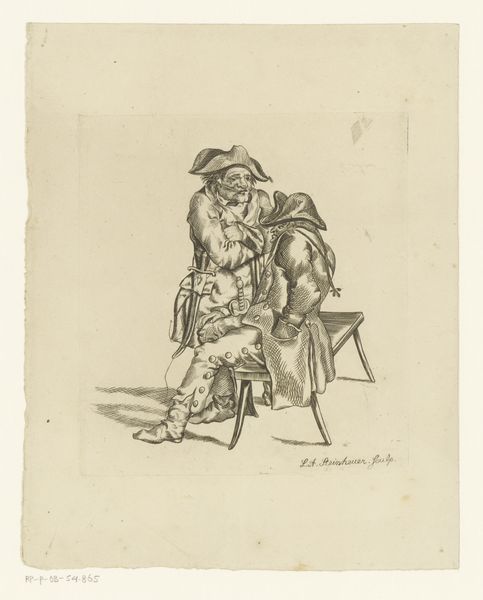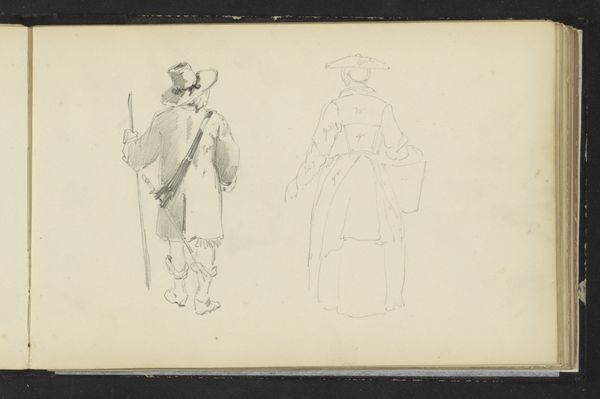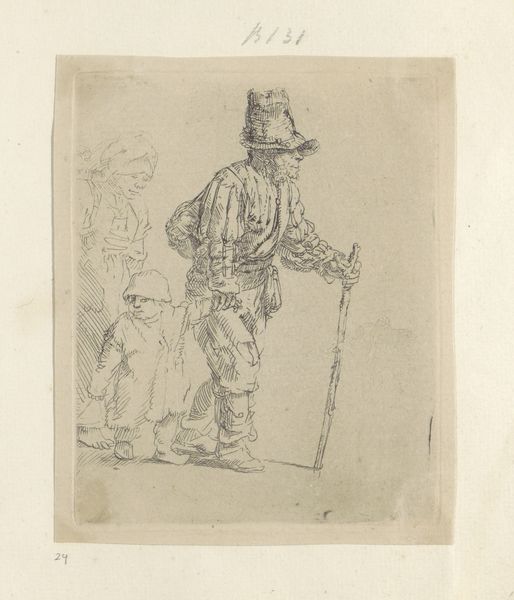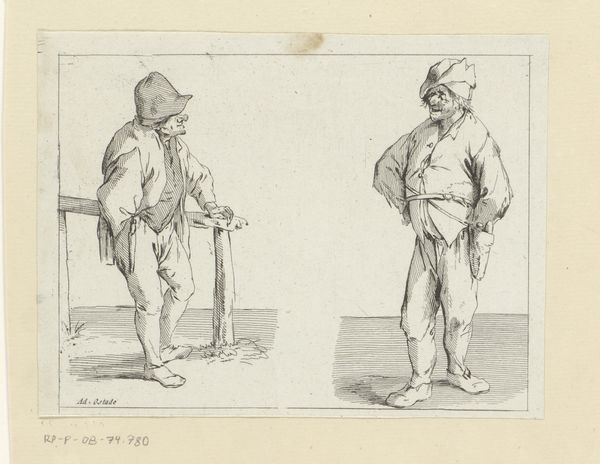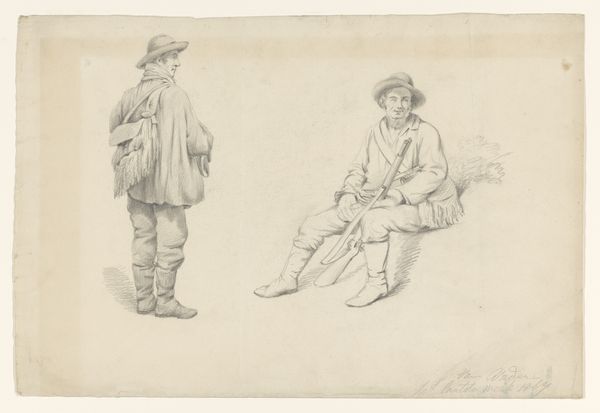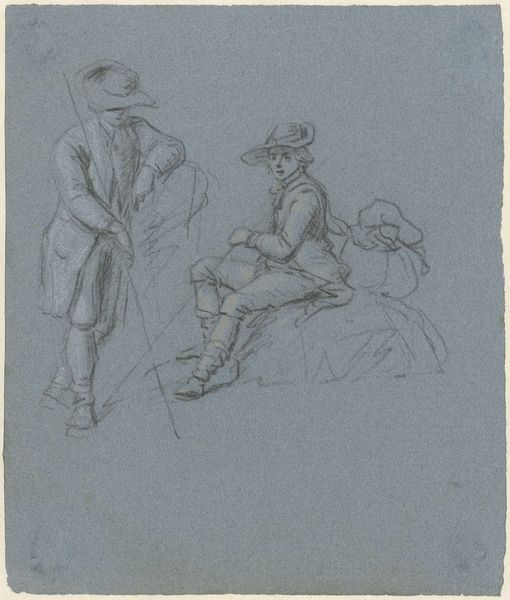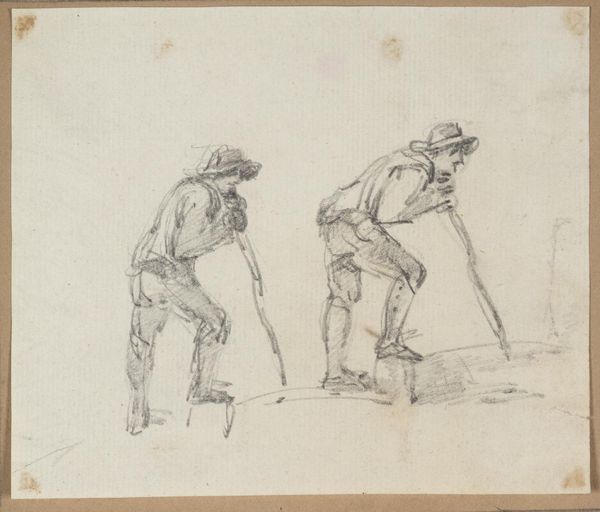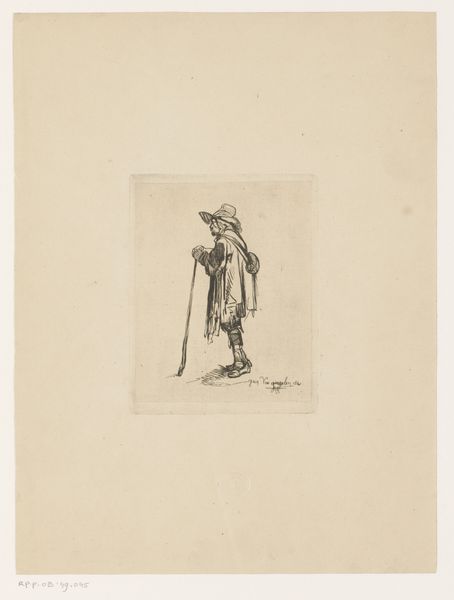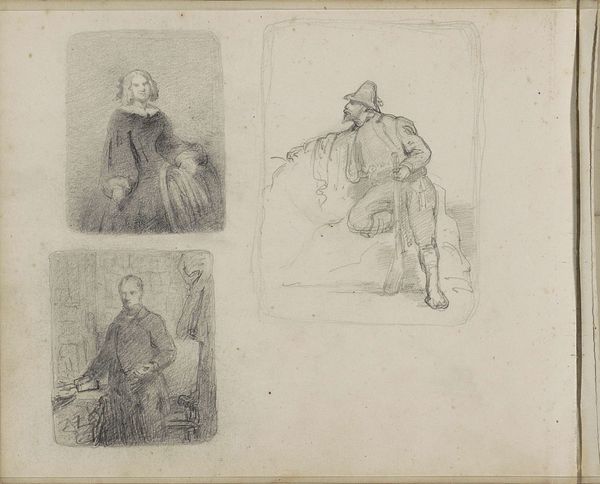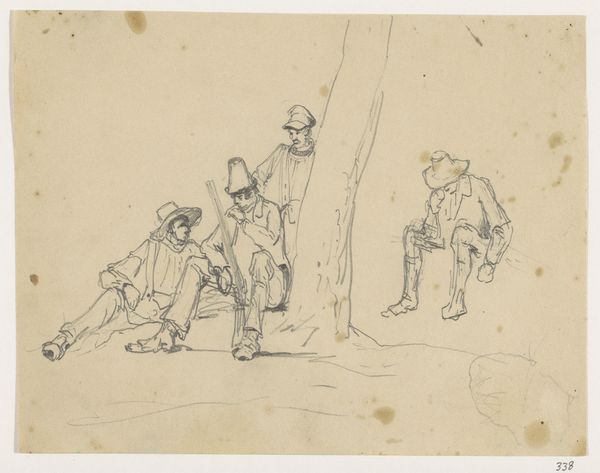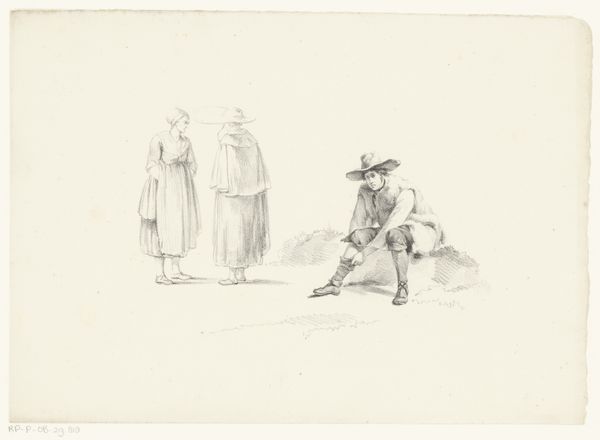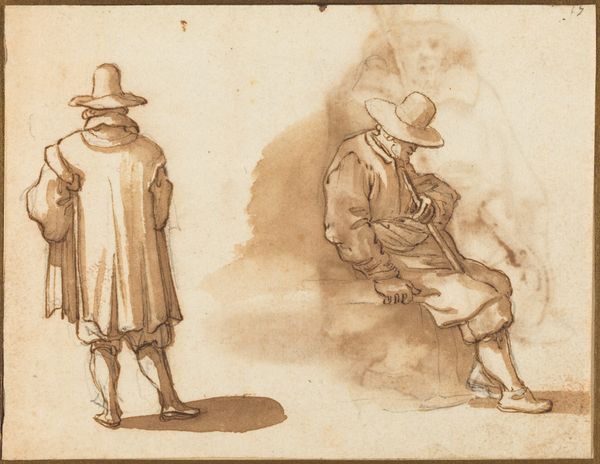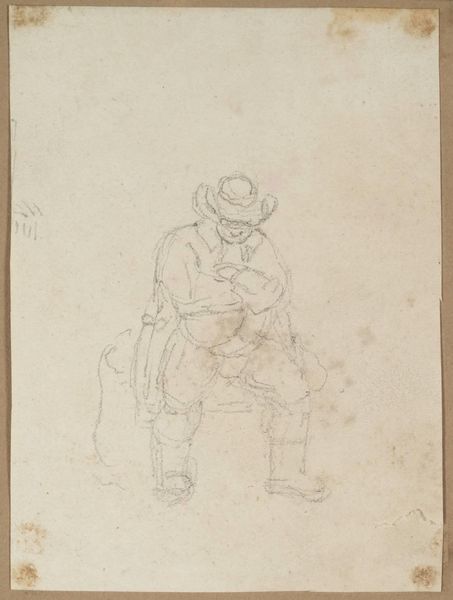
Copyright: Public Domain
Curator: Welcome! Today, we’re looking at Carl Morgenstern’s "Studienblatt römische Bauern", a pencil drawing created around 1836. Editor: Immediately, I'm struck by the simplicity and directness of this drawing. The light pencil strokes and open composition give it an intimate, almost ephemeral quality. Curator: Indeed. Morgenstern's work gives insight into the rising popularity of genre paintings in the 19th century, feeding the burgeoning romantic notions surrounding peasant life in Italy, and was influenced by similar depictions in earlier Dutch Golden Age art. His choice of subject is noteworthy considering the burgeoning middle-class art market. Editor: I see it a bit differently. I am interested in the figures. Consider the weight and position of the first peasant sitting casually by his presumably worn out shoes as he prepares to eat and compare that with the stance of the other who stands, hat proud and head tall holding the cane. Notice the artist carefully and selectively uses shadows around the edges of each character as well. There are intentional and visually impactful decisions here, from the placement of light to the positioning of his subjects. Curator: That attention to detail reflects a wider European interest in rural life, presenting romanticised portrayals divorced from the grim realities faced by agrarian workers—it's fascinating how these images were consumed as picturesque fantasies. Editor: Picturesque is one way to put it, though the bare rendering begs to differ. Observe how the thin lines allow you to observe every curve and line on their coats. We're looking at sketches here that emphasize basic shape above else, giving life through geometric presentation. Even his style has geometry here. Curator: Absolutely. This sketch sheet represents a vital document of a particular socio-cultural moment. Editor: And it delivers an example in rendering depth, the weight of shape, line quality, and texture, all to draw our eye towards his protagonists. Curator: Thinking about its position in Morgenstern’s oeuvre gives insight into how these pieces contributed to a wider trend within landscape and genre painting in the early 19th century. The consumption and valorization of a bygone ideal is interesting in relation to social and class tension across the continent. Editor: Ultimately, I appreciate how Morgenstern distills form down to its simplest elements, giving the essence and underlying geometric construction from observation without ever leaving out detail. It emphasizes light, material, weight, and depth with impressive formal precision and simplicity. Curator: Agreed. Morgenstern gives us both a glimpse into 19th century romantic visions and art practices through these quick but careful sketches.
Comments
No comments
Be the first to comment and join the conversation on the ultimate creative platform.
